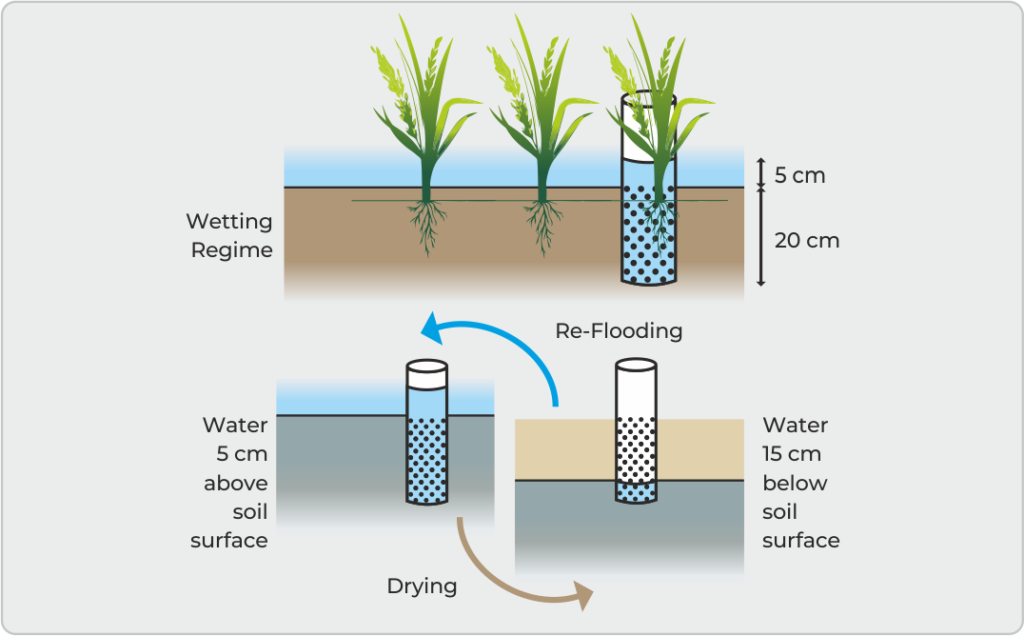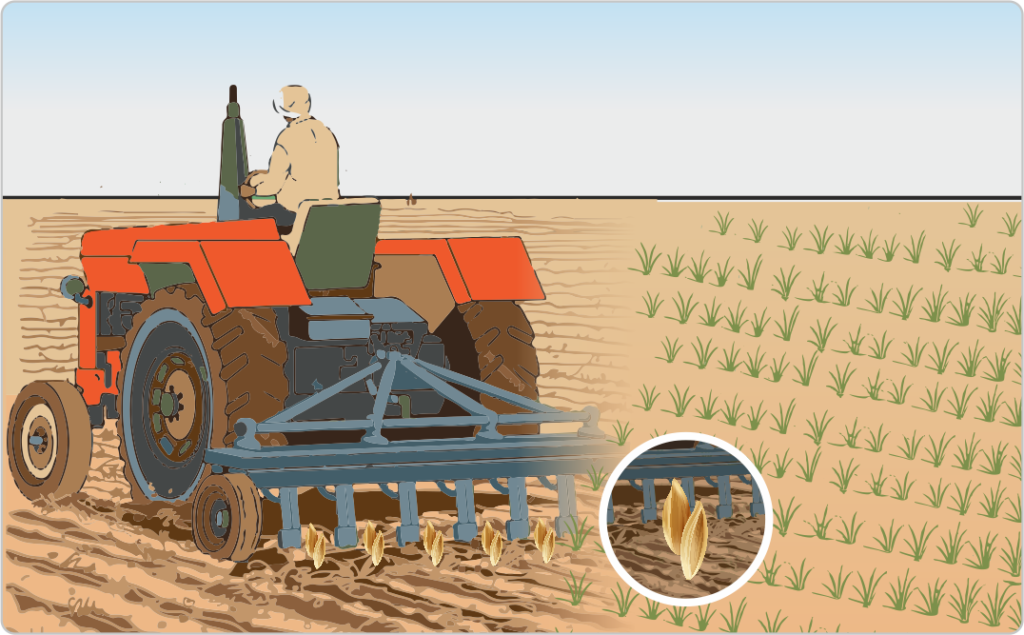About TGRA
Rice is a staple food for over 3.5 billion people, but its farming poses significant environmental challenges:
Methane Emissions: Rice cultivation contributes 8-10% of global methane emissions, with 27 times the global warming potential of CO2. Water Consumption: Rice cultivation consumes 24-30% of global freshwater resources, requiring 3,000-4,000 liters per kg of rice, exacerbating water scarcity for 2.2 billion people lacking safe drinking water. Smallholder Livelihoods: Many smallholder farmers (<2 hectares) struggle with low incomes and climate vulnerability.
The Need for Sustainability
As the global population surges, adopting sustainable rice cultivation practices is crucial for ensuring food security while mitigating environmental impact.
Puddled Transplanted Rice (PTR) cultivation, methane cycling and global warming

Transforming rice cultivation, transforming lives
The primary objective of The Good Rice Alliance (TGRA) is to address the water- and methane-intensive cultivation practices in rice farming, aiming to reduce GHG emissions by implementing agricultural practices that minimize the anaerobic decomposition of organic matter. TGRA focuses on transitioning rice cultivation from the conventional continuous flooding method to more sustainable practices such as Alternate Wetting and Drying (AWD) and Direct Seeded Rice (DSR). In AWD, fields are alternately flooded and non-flooded, with irrigation applied only after the ponded water has receded, leading to significant water applied. In DSR rice seeds are directly sown into the field, eliminating the need for puddling and traditional nursery-based transplanting, resulting into reduced need for flooding.
Alternate Wetting and Drying (AWD)

Alternate Wetting and Drying (AWD) is a water-saving rice cultivation method where fields are alternately flooded and unflooded guided by a perforated pipe inserted in paddy field. This results in water savings by up to 30%, which also reduces fuel consumption without impacting yields. Compared to traditional Puddled Transplanted Rice (PTR), AWD also lowers methane emissions by minimizing anaerobic decomposition of organic matter in the soil.
Direct Seeded Rice (DSR)

Direct Seeded Rice (DSR) is a method where rice seeds are directly sown into the field, eliminating the need for puddling and traditional nursery-based transplanting. This technique offers several benefits, water savings up to 35%, increasing land coverage with the same water. DSR reduces greenhouse gas emissions, helps mitigate climate change and improves soil health.
Pilot project is supported by
At Bayer Crop Science, we work every day to grow America’s future. We are passionate scientists, agronomists, field reps, supply chain specialists, and farmers (yes, we farm too) who are committed to strengthening the American farmer’s tool box.
Through hard work, pride, and perseverance, American farmers provide food for our tables, components for our medicine, and vibrance in our communities. With our diverse portfolio of tools from seeds and crop protection to digital farming solutions, we ensure that everything we do supports farmers and strengthens the future of U.S. agriculture.
GenZero is an investment platform company focused on accelerating decarbonization globally. Founded by Temasek, we invest in opportunities that require patient capital to be nurtured into impactful and scalable solutions with the ability to drive positive impact for our planet and people, while generating sustainable returns.
Shell is a global group of energy and petrochemical companies, employing 96,000 people across more than 70 countries.
Shell’s nature based solutions (NBS) business works to protect and enhance natural ecosystems that capture CO₂ emissions, benefit local communities, and improve biodiversity. Shell NBS then uses the carbon credits these projects generate to help both Shell and our customers decarbonise, by compensating for emissions that can’t yet be avoided or reduced.
